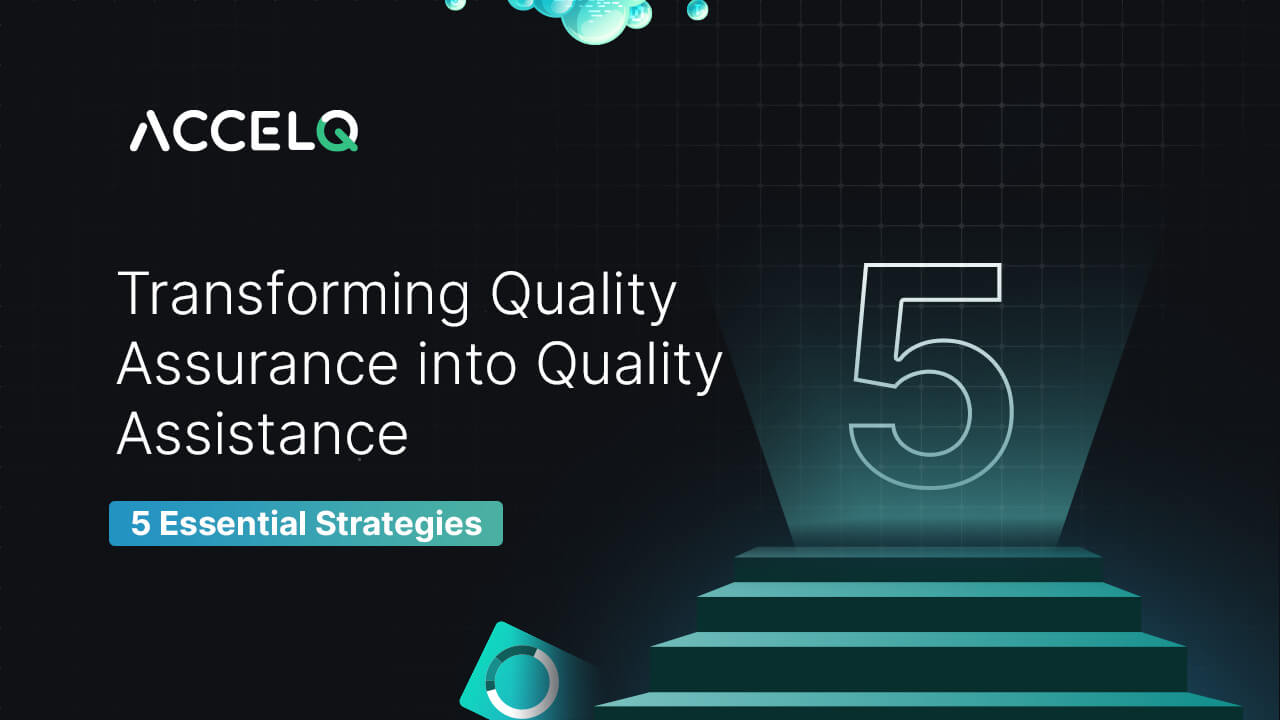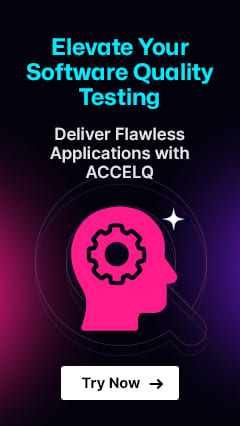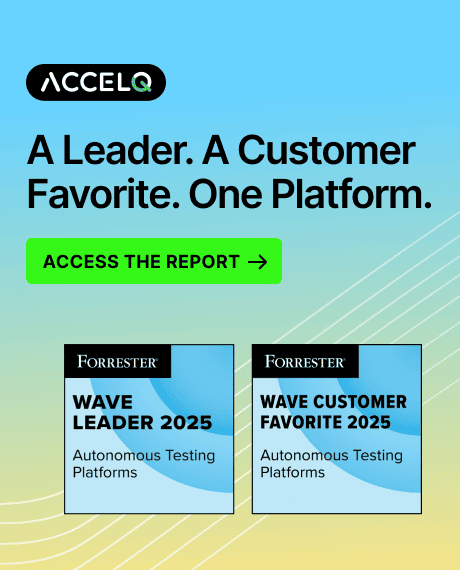From Quality Assurance Testing Process to Quality Assistance: 5 Key Strategies

Product quality has become more complex than ever due to an increasingly competitive software landscape. Traditional Quality Assurance (QA) strategies are aligned with the foremost Agile-driven software development environment. Enter Quality Assistance (or) Quality Engineering — a shift in paradigm where quality is built into the product development lifecycle right from the beginning. The question remains – how do they go about making this switch?
What Is Quality Assistance?
Coined by Cem Kaner, Quality Assistance (QA2.0) is an approach where quality responsibility shifts from solely on QA teams to a shared model involving developers, product managers, and stakeholders.
Unlike traditional QA, where testing is a separate phase:
- Developers actively test their code.
- Quality becomes a collaborative responsibility across teams.
Key Differences:
Traditional Quality Assurance Testing Process:
- Testing is a separate phase, managed primarily by QA teams.
- Project kickoff (Dev, QA, PMs)
- Application coding (Product team)
- Product walkthrough (Dev, QA, PMs)
- Software testing (QA team)
- Product release
Quality Assistance Process:
- Quality becomes a collaborative effort throughout the development lifecycle.
- Developers actively test their code alongside QA efforts.
- Project kickoff and QA test analysis
- Coding and self-testing by developers
- Collaborative product walkthroughs (Dev, QA, PMs)
- Additional testing (if required)
- Product release
In Quality Assistance, the focus shifts from finding defects late to preventing them early. This collaborative approach accelerates development and improves overall software quality.
What is the key difference between quality assistance vs quality assurance? Quality is no longer the QA team’s job alone. Now, let’s explore five essential strategies to make this transformation happen.
5 Strategies to Transform Quality Assurance into Quality Assistance
Here are five essential strategies to make the transition from quality assurance to quality engineering:
1. Make Quality a Company-Wide Mission
Quality is not a team-specific responsibility but a core part of the company’s culture. By embedding quality into the mission statement, organizations ensure all teams prioritize customer satisfaction and software excellence.
Best Practices:
- Highlight the role of high-quality products in driving customer loyalty.
- Define clear software requirements with built-in quality standards.
- Foster a quality-first mindset across leadership, development, and testing teams.
“Quality isn’t just another step; it’s a mindset that powers every decision.”
2. Build a Unified Quality-Centric Approach
Transforming to Quality Assistance requires breaking silos and unifying the approach to product development and testing.
Key Steps:
- Understand workflows across teams and align efforts.
- Promote Agile and Lean principles to remove bottlenecks.
- Implement efficient testing frameworks that support CI/CD pipelines.
- Focus on continuous improvements rather than isolated testing phases.
Organizations can release products faster and more reliably by enabling developers to own quality.
3. Foster Organizational Acculturation
Acculturation involves gradually shifting team mindsets to embrace Quality Assistance. This change happens through education, communication, and demonstrating quick wins.
Tips to Enable Change:
- Clearly communicate why the shift to Quality Assistance matters.
- Showcase real-world benefits like faster deployment cycles and fewer defects.
- Share small wins (e.g., “We deployed in 5 minutes without errors!”).
“Change starts with understanding the ‘why’ and visualizing the results.”
4. Embed a Quality Mindset Into Development Teams
Development teams must adopt a quality ownership mindset for Quality Assistance to succeed. QA engineers can enable this shift by:
- Supporting up to 5 product teams.
- Offering technical guidance in areas like frontend, backend, or API testing.
- Promoting test-driven development (TDD) and automation practices.
When developers proactively test and validate their code, quality becomes a built-in process rather than a post-development hurdle.
5. Align Quality Roles and Responsibilities
A successful Quality Assistance model requires aligning roles and workflows to reflect quality as a shared responsibility.
How to Align Teams:
- Define a clear quality mission statement.
- Map business-critical workflows to quality deliverables.
- Clarify roles for testing, validation, and defect resolution across teams.
- Conduct regular quality reviews and foster collaboration.
Organizations can streamline testing and improve product reliability by ensuring everyone—from developers to product managers—owns quality.
Why Choose ACCELQ for Quality Engineering
Among the latest technology trends, AI enables innovation in quality engineering. Furthermore, no-code and low-code platforms break down barriers like limited scalability and lack of skilled resources. Powered by AI, ACCELQ has developed a codeless test automation platform that is easy to implement in any software testing environment.
- AI-Powered Codeless Test Automation: Simplifies complex testing processes without scripting.
- Cloud-Native Platform: Access testing capabilities anytime, anywhere.
- Unified Testing: Supports testing across web, mobile, APIs, and packaged applications.
- Boosts Productivity: Achieve 7.5x higher productivity and up to 70% cost savings.
- No Vendor Lock-Ins: Flexible, scalable, and customizable.
ACCELQ empowers teams to adopt Quality Assistance seamlessly by providing:
- Automation frameworks that enable faster delivery.
- Easy integration with CI/CD pipelines.
- AI-powered tools for robust, reliable testing.
Conclusion
Quality assistance is more of a paradigm shift than a buzzword, empowering businesses to deliver high-quality products centered on efficiency. With the five strategies outlined above and the offerings of platforms like ACCELQ, organizations can seamlessly transition through this journey and even accelerate their transition to a forward-looking Quality Engineering model.
Are you ready to transform your quality initiatives? Speak with ACCELQ today to understand how AI-based codeless automation can improve your quality metrics.
Yuvarani Elankumaran
Technical Consultant at ACCELQ
Yuvarani Elankumaran is a highly skilled technical consultant at ACCELQ. With over a decade of experience in the field of Test Automation, Yuvarani is a seasoned professional who is well-versed in a variety of programming languages and automation frameworks.
You Might Also Like:
 Take your API Testing to Regression maturity in 3 Steps
Take your API Testing to Regression maturity in 3 Steps
Take your API Testing to Regression maturity in 3 Steps
 The Top 7 UI Test Automation Best Practices
The Top 7 UI Test Automation Best Practices
The Top 7 UI Test Automation Best Practices
 How to Turbo-Charge FinancialForce Test Automation in 2026?
How to Turbo-Charge FinancialForce Test Automation in 2026?

































